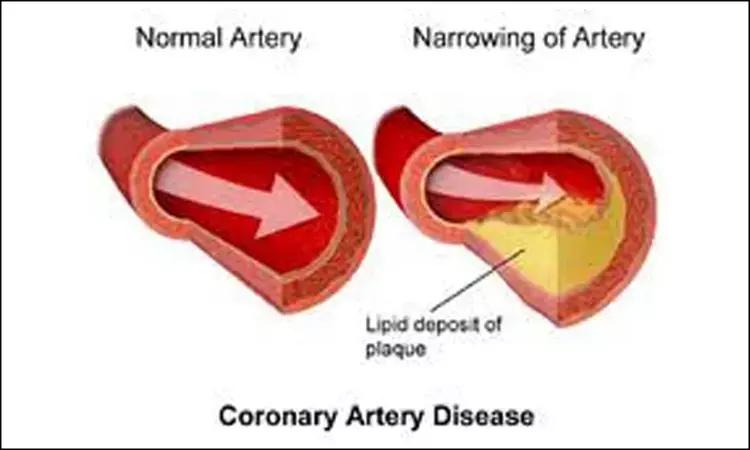
Low Vaspin Levels Linked To Increased Coronary Artery Disease
- byDoctor News Daily Team
- 18 February, 2025
- 0 Comments
- 0 Mins

Researchers have found that low serum vaspin levels are associated with coronary artery stenosis. Plasma vaspin concentration reflects possible endothelial dysfunction in CAD patients and correlates with CAD severity. Plasma vaspin concentration is associated with metabolic syndrome and obesity parameters.
The relationship between serum vaspin levels and metabolic or coronary artery disease is currently of interest for researchers. Although adipokine concentrations have been shown to be increased significantly in atherosclerotic lesions, the role of adipokines in the atherosclerotic process remains to be elucidated.
Researchers at the Department of Cardiology, Adiyaman Education and Research Hospital, Adiyaman, Turkey have conducted a study to find out associations between Vaspin Levels and Coronary Artery Disease.
Vaspin is a new biological marker of CAD. Low serum vaspin levels are associated with coronary artery stenosis. Plasma vaspin concentration reflects possible endothelial dysfunction in CAD patients and correlates with CAD severity. Plasma vaspin concentration is associated with metabolic syndrome and obesity parameters. The ultimate goal regarding vaspin is to detect and prevent diseases caused by atherosclerosis, as well as to preserve vascular health and contribute to public health.
Vascular inflammation triggered by vaspin inhibits atherogenesis by suppressing macrophage foam cell formation and vascular smooth muscle cell migration and proliferation. Vaspin also contributes to plaque stabilization by increasing collagen content and reducing the intraplaque macrophage to vascular smooth muscle cell ratio. The therapeutic goal concerning vaspin is to fight atherosclerosis and related diseases, as well as to maintain vascular health.
CVIA is available on the IngentaConnect platform and at Cardiovascular Innovations and Applications. Submissions may be made using ScholarOne Manuscripts. There are no author submission or article processing fees. CVIA is indexed in the EMBASE, ESCI, OCLC, Primo Central (Ex Libris), Sherpa Romeo, NISC (National Information Services Corporation), DOAJ and Index Copernicus Databases. Follow CVIA on Twitter @CVIA_Journal; or Facebook.
For more details click the link: http://dx.doi.org/10.15212/CVIA.2019.0565
Disclaimer: This website is designed for healthcare professionals and serves solely for informational purposes.
The content provided should not be interpreted as medical advice, diagnosis, treatment recommendations, prescriptions, or endorsements of specific medical practices. It is not a replacement for professional medical consultation or the expertise of a licensed healthcare provider.
Given the ever-evolving nature of medical science, we strive to keep our information accurate and up to date. However, we do not guarantee the completeness or accuracy of the content.
If you come across any inconsistencies, please reach out to us at
admin@doctornewsdaily.com.
We do not support or endorse medical opinions, treatments, or recommendations that contradict the advice of qualified healthcare professionals.
By using this website, you agree to our
Terms of Use,
Privacy Policy, and
Advertisement Policy.
For further details, please review our
Full Disclaimer.
Tags:

Recent News
Normal-Tension Glaucoma Closely Associated With Co...
- 10 October, 2022
Air Pollution Tied To Increased Risk Of Premature...
- 24 May, 2023

Daily Newsletter
Get all the top stories from Blogs to keep track.


0 Comments
Post a comment
No comments yet. Be the first to comment!